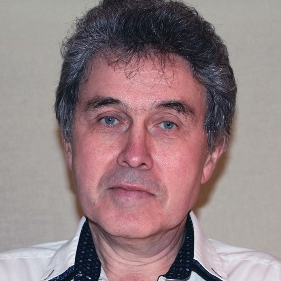Understanding the Molecular Diversity of Astrocytes
A special issue of Brain Sciences (ISSN 2076-3425). This special issue belongs to the section "Neuroglia".
Deadline for manuscript submissions: closed (18 October 2019) | Viewed by 19912
Special Issue Editor
Interests: astrocyte; receptor; signalling; noradrenaline; G-protein coupled receptors; glioblastoma; imaging; patch clamp; neuroprotection; optogenetics; Ca2+; cAMP; brainstem; cardio-respiratory control
Special Issues, Collections and Topics in MDPI journals
Special Issue Information
Dear Colleagues,
Astrocytes have been recognised as important players in a wide range of brain functions. Both physiological and pathological processes are mediated, supported or assisted by astrocytes. We also now know that these cells are extremely dynamic and their plasticity is manifested not only by the level of GFAP expression but by a wide range of transcriptional adaptations. Recent evidence also indicates that astrocytes in different parts of the brain have different genetic fingerprints. In fact, some studies suggest that even in the same structure (e.g., the cortex of the hippocampus) there are multiple genetically distinct populations of astrocytes. But, how many genuine sub-types that can be reliably functionally and anatomically distinguished are actually there?
Our current knowledge of astrocytic transcriptomes comes from studies which have used very different methods, and this is an important factor. There are published transcriptomes of cultured astrocytes subjected to various treatment protocols [1,2], transcriptomes from cells isolated using immune-panning from enzymatically digested tissues [3,4] or astrocytes isolated using FACS from lines of mice expressing fluorescent proteins [5], TRAP and RiboTag technology have been employed as well [6-9]. Notably, there are also single-cell transcriptomes [10,11].
Each of the experimental approaches and specific paradigms used to challenge astrocytes will have consequences for what we see, and it is important to keep these differences in mind when trying to make sense of the plethora of published transcriptomic data.
We believe it is time for the leading laboratories to discuss their findings in one volume where we focus readers’ attention on the key questions: how much does our “vision” of astrocytes depend on the experimental conditions, and what are the take-home messages of the transcriptomic data so far?
Reference
- Hasel, P.; Dando, O.; Jiwaji, Z.; Baxter, P.; Todd, A.C.; Heron, S.; Márkus, N.M.; McQueen, J.; Hampton, D.W.; Torvell, M.; et al. Neurons and neuronal activity control gene expression in astrocytes to regulate their development and metabolism. Commun. 2017, 8, 15132.
- Qiu, J.; Dando, O.; Baxter, P.S.; Hasel, P.; Heron, S.; Simpson, T.I.; Hardingham, G.E. Mixed-species RNA-seq for elucidation of non-cell-autonomous control of gene transcription. Protoc. 2018, 13, 2176–2199.
- Liddelow, S.A.; Guttenplan, K.A.; Clarke, L.E.; Bennett, F.C.; Bohlen, C.J.; Schirmer, L.; Bennett, M.L.; Münch, A.E.; Chung, W.-S.; Peterson, T.C.; et al. Neurotoxic reactive astrocytes are induced by activated microglia. Cell Boil. 2017, 541, 481–487.
- Zhang, Y.; Chen, K.; Sloan, S.A.; Bennett, M.L.; Scholze, A.R.; O'Keeffe, S.; Phatnani, H.P.; Guarnieri, P.; Caneda, C.; Ruderisch, N.; et al. An RNA-Sequencing Transcriptome and Splicing Database of Glia, Neurons, and Vascular Cells of the Cerebral Cortex. Neurosci. 2014, 34, 11929–11947.
- Morel, L.; Men, Y.; Chiang, M.S.R.; Tian, Y.; Jin, S.; Yelick, J.; Higashimori, H.; Yang, Y. Intracortical astrocyte subpopulations defined by astrocyte reporter Mice in the adult brain. Glia 2019, 67, 171–181.
- Bellesi, M.; De Vivo, L.; Tononi, G.; Cirelli, C. Transcriptome profiling of sleeping, waking, and sleep deprived adult heterozygous Aldh1L1–eGFP-L10a mice. Data 2015, 6, 114–117.
- Chai, H.; Diaz-Castro, B.; Shigetomi, E.; Monte, E.; Octeau, J.C.; Yu, X.; Cohn, W.; Rajendran, P.S.; Vondriska, T.M.; Whitelegge, J.P.; et al. Neural Circuit-Specialized Astrocytes: Transcriptomic, Proteomic, Morphological, and Functional Evidence. Neuron 2017, 95, 531–549.
- Itoh, N.; Itoh, Y.; Tassoni, A.; Ren, E.; Kaito, M.; Ohno, A.; Ao, Y.; Farkhondeh, V.; Johnsonbaugh, H.; Burda, J.; et al. Cell-specific and region-specific transcriptomics in the multiple sclerosis model: Focus on astrocytes. Natl. Acad. Sci. USA 2018, 115, E302–E309.
- Anderson, M.A.; Burda, J.E.; Ren, Y.; Ao, Y.; O'Shea, T.M.; Kawaguchi, R.; Coppola, G.; Khakh, B.S.; Deming, T.J.; Sofroniew, M.V. Astrocyte scar formation aids central nervous system axon regeneration. Nature 2016, 532, 195–200.
- Thomsen, E.R.; Mich, J.K.; Yao, Z.; Hodge, R.D.; Doyle, A.M.; Jang, S.; Shehata, S.I.; Nelson, A.M.; Shapovalova, N.V.; Levi, B.P.; Ramanathan, S. Fixed single-cell transcriptomic characterization of human radial glial diversity. Methods 2016, 13, 87–93.
- Wu, Y.E.; Pan, L.; Zuo, Y.; Li, X.; Hong, W. Detecting Activated Cell Populations Using Single-Cell RNA-Seq. Neuron 2017, 96, 313–329.
Prof. Dr. Sergey Kasparov
Guest Editor
Manuscript Submission Information
Manuscripts should be submitted online at www.mdpi.com by registering and logging in to this website. Once you are registered, click here to go to the submission form. Manuscripts can be submitted until the deadline. All submissions that pass pre-check are peer-reviewed. Accepted papers will be published continuously in the journal (as soon as accepted) and will be listed together on the special issue website. Research articles, review articles as well as short communications are invited. For planned papers, a title and short abstract (about 100 words) can be sent to the Editorial Office for announcement on this website.
Submitted manuscripts should not have been published previously, nor be under consideration for publication elsewhere (except conference proceedings papers). All manuscripts are thoroughly refereed through a single-blind peer-review process. A guide for authors and other relevant information for submission of manuscripts is available on the Instructions for Authors page. Brain Sciences is an international peer-reviewed open access monthly journal published by MDPI.
Please visit the Instructions for Authors page before submitting a manuscript. The Article Processing Charge (APC) for publication in this open access journal is 2200 CHF (Swiss Francs). Submitted papers should be well formatted and use good English. Authors may use MDPI's English editing service prior to publication or during author revisions.






